Combine Tulips To Create Attractive Container Displays – These Tips Give Good Flowering


Elizabeth is a Permaculture Garden Designer, Sustainability Consultant and Professional Writer, working as an advocate for positive change. She graduated from the University of St. Andrews with an MA in English and Philosophy and obtained a Diploma in Applied Permaculture Design from the Permaculture Association.
Reviewed By ROY NICOL

Roy is a Professional Gardener and Horticultural Consultant, specialising in large garden year-round maintenance and garden development. He is an RHS Master of Horticulture and uses his research in the application of no-dig methods in ornamental garden settings. Roy has been a Professional Gardener for more than six years and is a member of the Chartered Institute of Horticulture, Professional Gardener's Guild and Association of Professional Landscapers (Professional Gardener).
Contributions From EMILY CUPIT

Emily is a Gardening Writer, Photographer and Videographer from Derbyshire, UK. She is the Founder of Emily's Green Diary - a community of more than 75,000 people who share in her gardening journey.
IN THIS GUIDE
TULIP GUIDES
Container Growing
Deadheading
Varieties
Tulips are beautiful flowers of late spring and early summer that can provide great interest to any garden.
We all know that tulips can look lovely in a wide range of different gardens.
However, you might be wondering if you can grow tulips in pots.
Are Tulips Suited To Containers?
Tulips are, of course, commonly grown in containers and can thrive in a container garden.
They are a great choice for those looking to create beautiful flowering displays for the spring and early summer.
There are a huge number of different tulip varieties that you might choose from when creating a container garden.
Different varieties can be combined to create attractive container displays, and tulips also lend themselves well to mixed container displays alongside other spring bulbs.
When selecting tulips for container growing, it can be an advantage to look for tulips that will flower for several years without lifting.
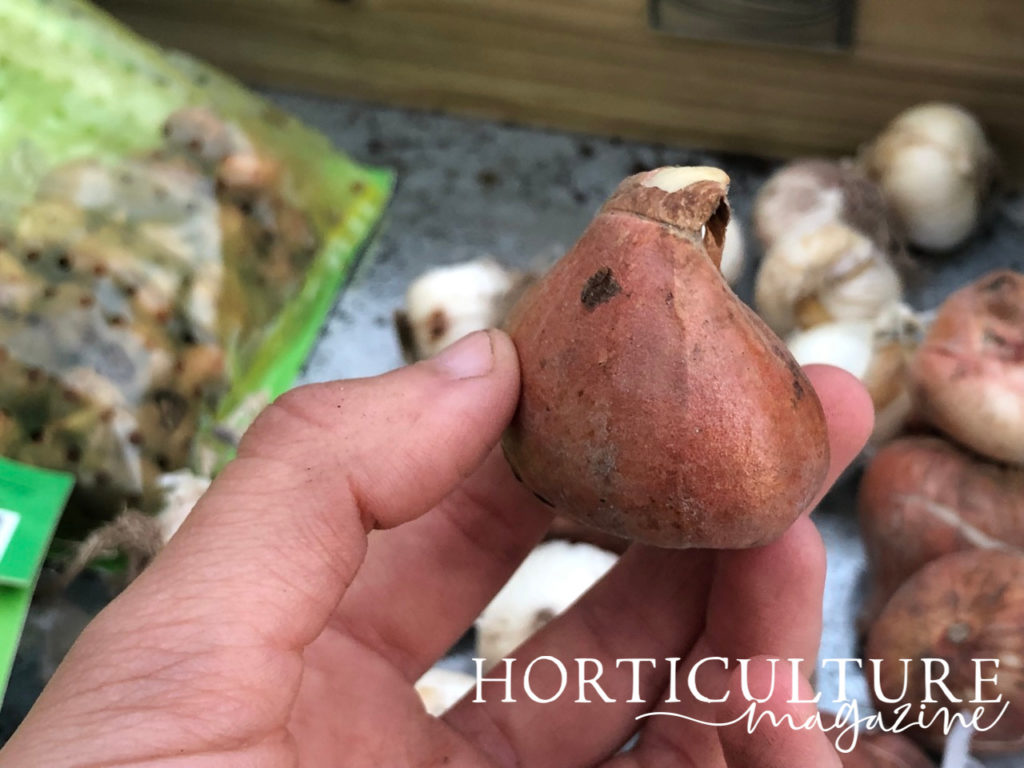
However, it is important to note that there are also certain specialist tulip types that are specifically suited to cultivation in free-draining conditions in a rock or gravel garden.
There are also some that grow in partial shade in moisture-retentive soil and a few that are more tender and are grown in a greenhouse undercover.
So, when choosing tulips, make sure that you understand the needs of the different tulips that you would like to grow.
When selecting tulips for a container garden, you will also need to think not only about the shape and colour of the tulips in question but also when precisely they bloom.
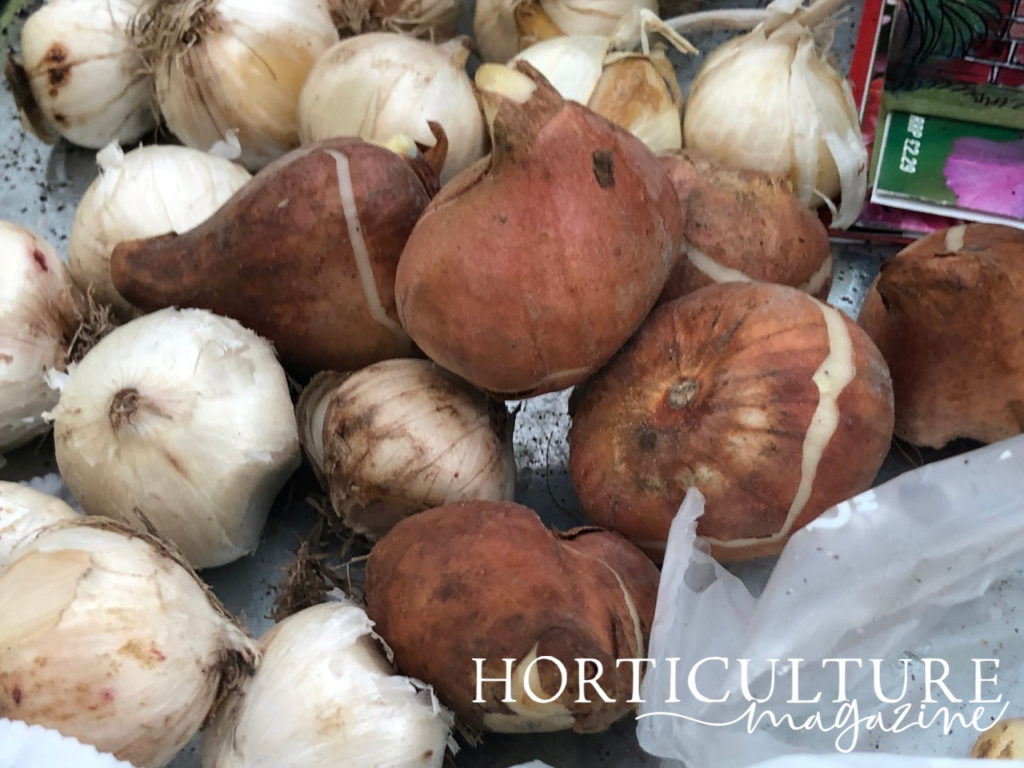
It will be important to know when particular tulips flower in order to find the right combination of bulbs and other plants to include in your container displays.
Even if you are growing tulips alone, you might wish to consider combining early-flowering, mid-season and late-flowering tulip varieties to extend the appeal of the display.
“Another factor to consider is the height the tulips grow to in relation to other bulbs in the container,” shares Master Horticulturist Roy Nicol.
“For example, ‘Red Riding Hood’ is a dwarf variety to 20cm best at the edges of a container while ‘White Triumphator’ is a tall variety to 90cm best in a central position so as to not obscure other flowers.”
Suitable Containers
When choosing a container for most tulips, it is important to select one which is large enough to create an appealing display.
Like other spring bulbs, tulips tend to look best if they are planted in clumps or drifts with as many flowers as possible.
Of course, in a container, there will always be a limit to how many tulips you can grow, but choosing a larger container at least 40-50cm in depth and width is usually the best policy.
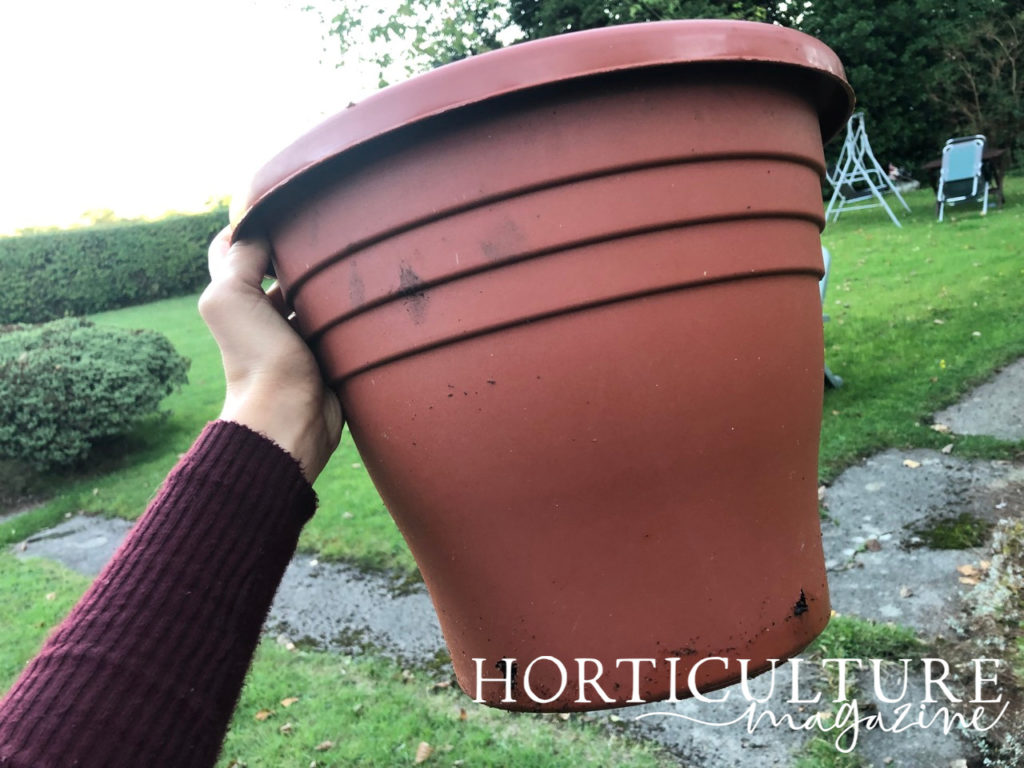
A reasonably sized container will allow you to grow an attractive display of tulips if you are growing these on their own.
However, it will also allow you to have more options when it comes to combining tulips with other spring flowering bulbs, or other bedding plants to create interesting and attractive container displays that will look great over a longer period of time.
When choosing your container, remember that you can consider reclaimed or reused items, and don’t necessarily have to rush out and purchase new pots or containers for your garden.
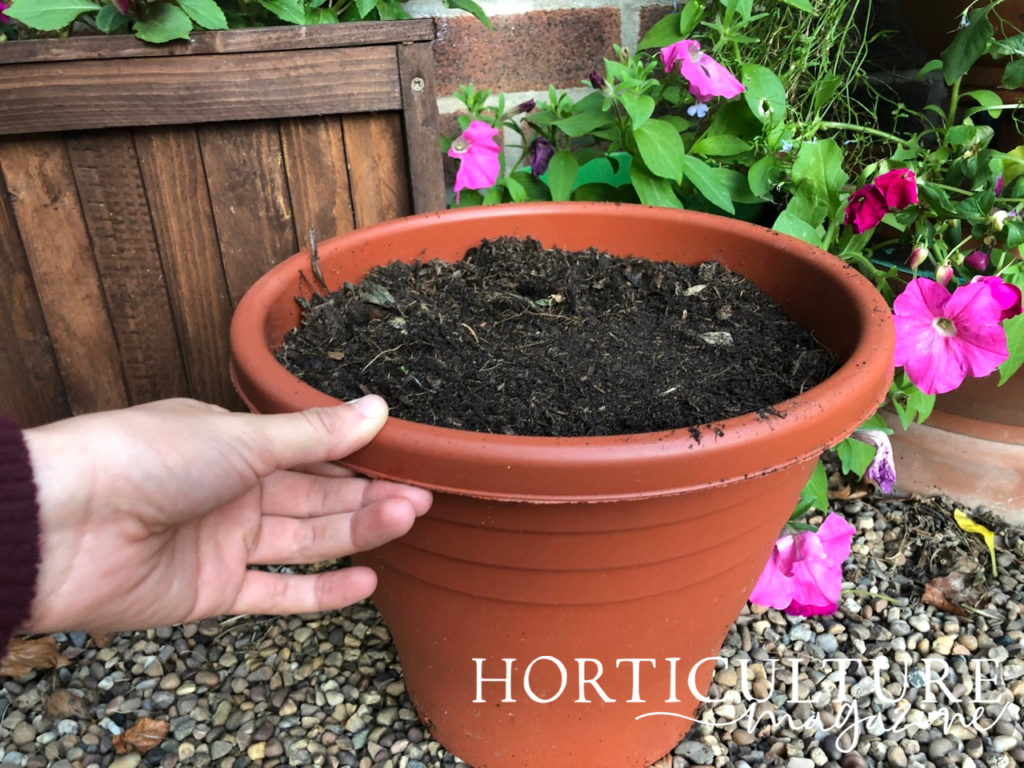
Whichever container you choose, it is important to make sure that excess water can drain freely from the hole or holes at the base.
Most tulips, and most other common spring bulbs, require free-draining conditions as waterlogged soil can be expected to cause the bulbs to rot and fail to flower.
Suitable Compost
Most tulips do not really require anything particularly special when it comes to the growing medium.
You can make use of any peat-free multipurpose compost or a homemade equivalent to fill your containers.
I use Biochar All-Purpose which is certified 100% peat-free –
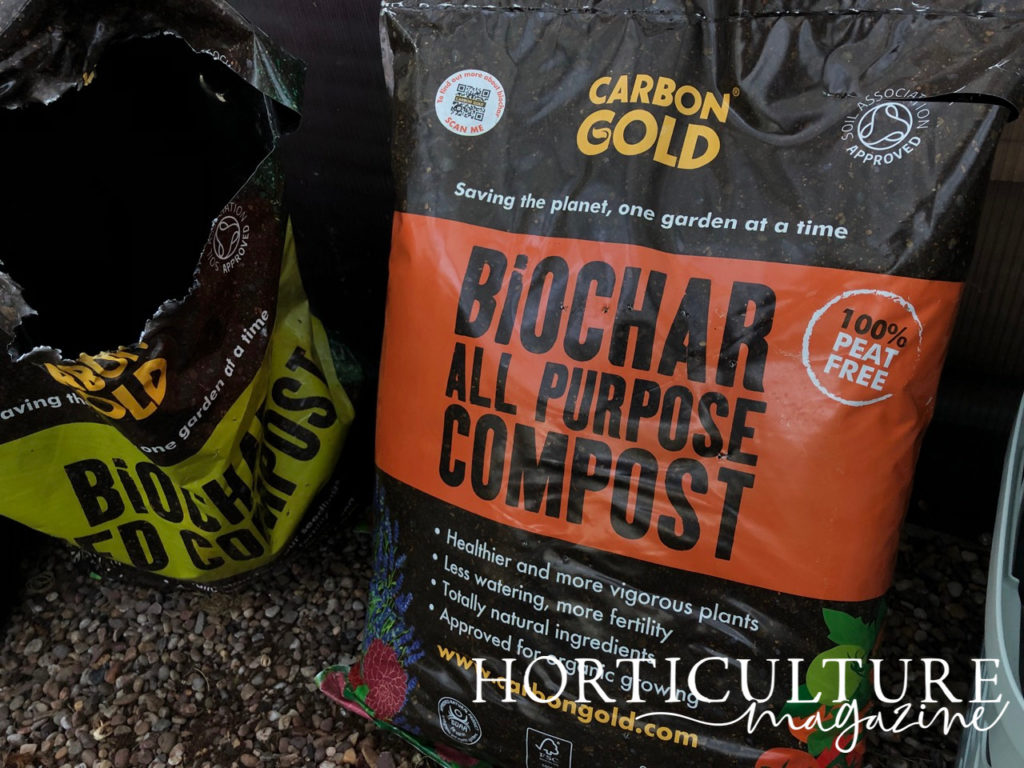
Just make sure that whatever growing medium you choose, it is relatively free-draining and won’t cause bulbs to rot due to excessive water retention.
Typically I find that adding 1 part grit to 3 parts of this growing medium will help make sure that drainage is not an issue.
If you plan on keeping tulips in pots for more than a single season, using a loam-based mix such as compost with added John Innes or a homemade loam-based or soil-based mix can be beneficial.
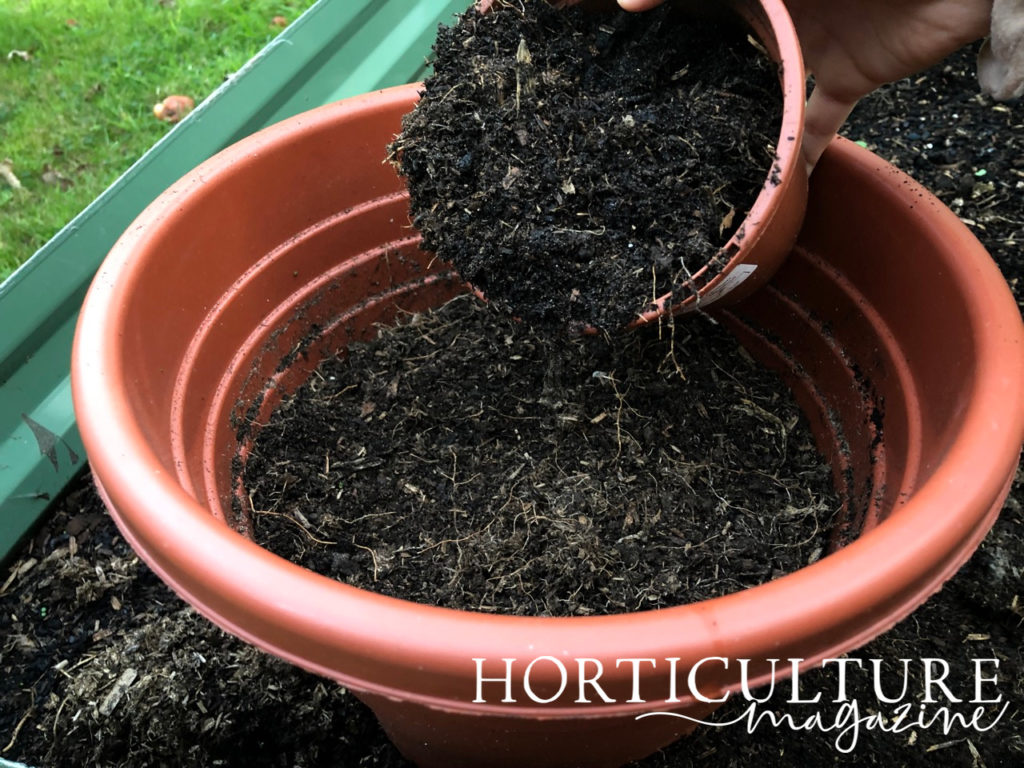
Note that some specialist tulips need even better drainage and require additional steps to improve this, such as a layer of sharp sand below the bulbs, and a layer of grit topdressing in the top of the container.
Make sure you understand the needs of the particular type of tulips that you are growing.
Planting Your Tulip Bulbs
You can plant your tulip bulbs in pots any time in autumn, but I’d recommend sowing tulip bulbs in October or November, which is a little later than most other spring bulbs.
Tulips can be sown earlier but will be more susceptible to a disease called tulip fire.
However, if you are planting tulip bulbs in a mixed display alongside other spring bulbs, you may wish to plant tulip bulbs earlier so that you can plant them at the same time as other bulbs in a layered system called a bulb lasagne.
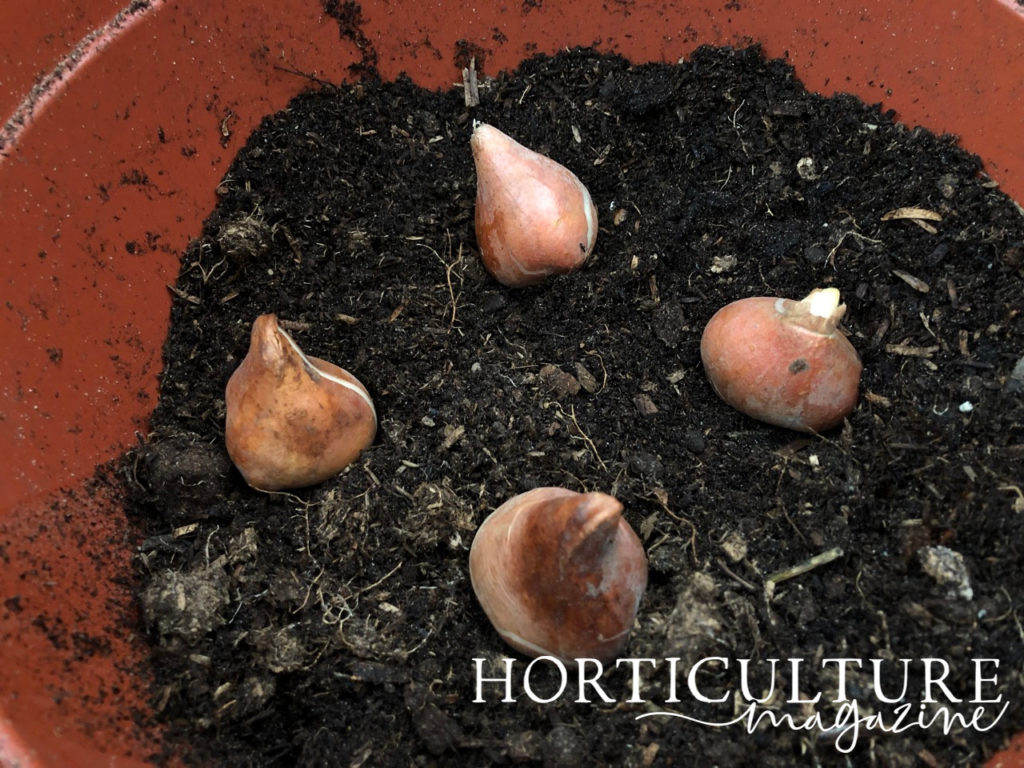
Whether you plant at the same time as other spring bulbs or hold off for a while, make sure that you get your tulips planted before the first hard frost in your area.
Of course, this will be later in some parts of the UK and earlier in others.
Spacing can vary depending on a range of factors, including the specific variety or varieties of tulip that you have chosen to grow.
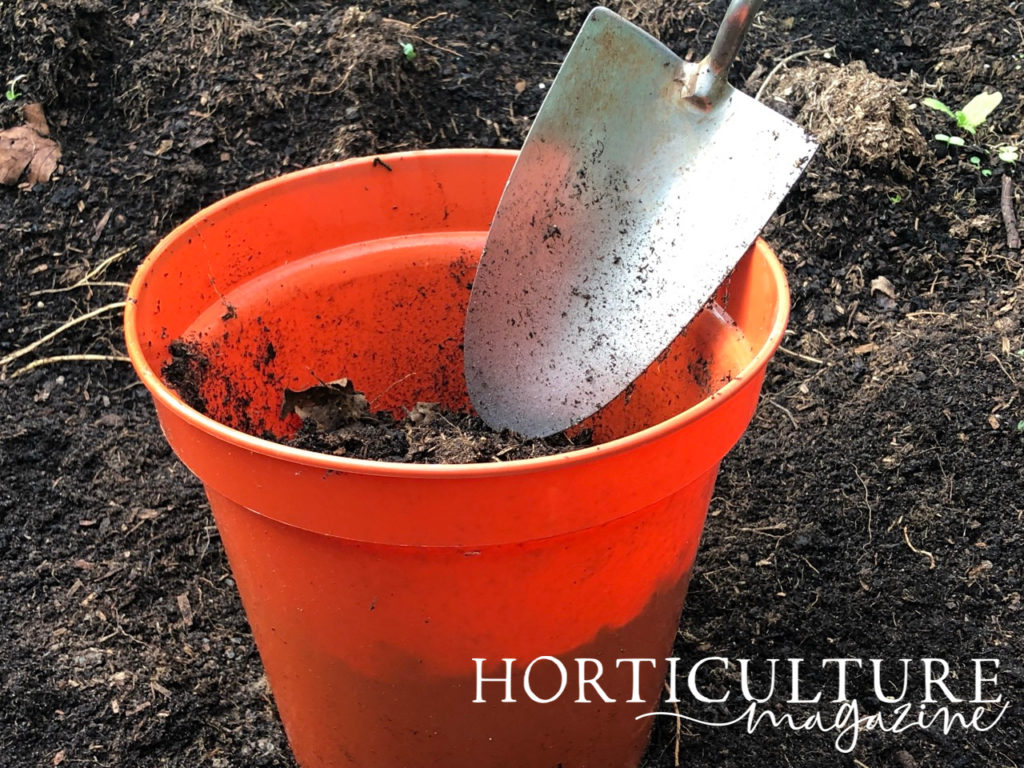
As a general rule of thumb, tulip bulbs should be planted at a depth of at least 2-3 times the bulb’s height, and at a spacing of at least twice the bulb’s width.
Make sure when planting that the pointy end of the bulb faces upwards.
How Many Can You Plant Per Pot?
Naturally, how many tulips you can grow in a particular container will depend on the size of the container you have selected.
It will also depend, of course, on whether you are growing tulips alone or combining them with other spring bulbs or plants.
However, as a general rule, you can place between 12-20 bulbs within a 40-50cm pot.

Of course, you would reduce this number if you are planting tulips alongside other plants or making a bulb lasagne that will also include other spring bulbs.
If you are creating a bulb lasagne, then tulips will often form the lowest layer or tier within your pot, as the latest flowering bulbs.
Above these, in a middle layer, you might plant some daffodil bulbs, and some smaller earlier bulbs, like Muscari, might be placed in a layer above these.

You might also place different tiers with different varieties of tulip, by planting the late flowering ones at the base, mid-season ones a little higher within the pot, and early flowering types in the highest tier, making sure that there is still a covering of 2-3 times the bulb’s height of growing medium above the bulbs positioned last.
Over the winter, you might also add winter bedding on top, so that there is not just bare soil to look at in your container over the coldest part of the year.
Ongoing Potted Tulip Care
When choosing where to position your tulips in containers, make sure that you take into account the needs of the particular variety that you have chosen to grow.
Most tulips, aside from those with special requirements, will grow best in a sunny and relatively sheltered spot.
Make sure that you water only sparingly over the winter months (if at all), and position your container so that the bulbs are not inundated with high levels of rainfall and that excess water can always drain away freely.
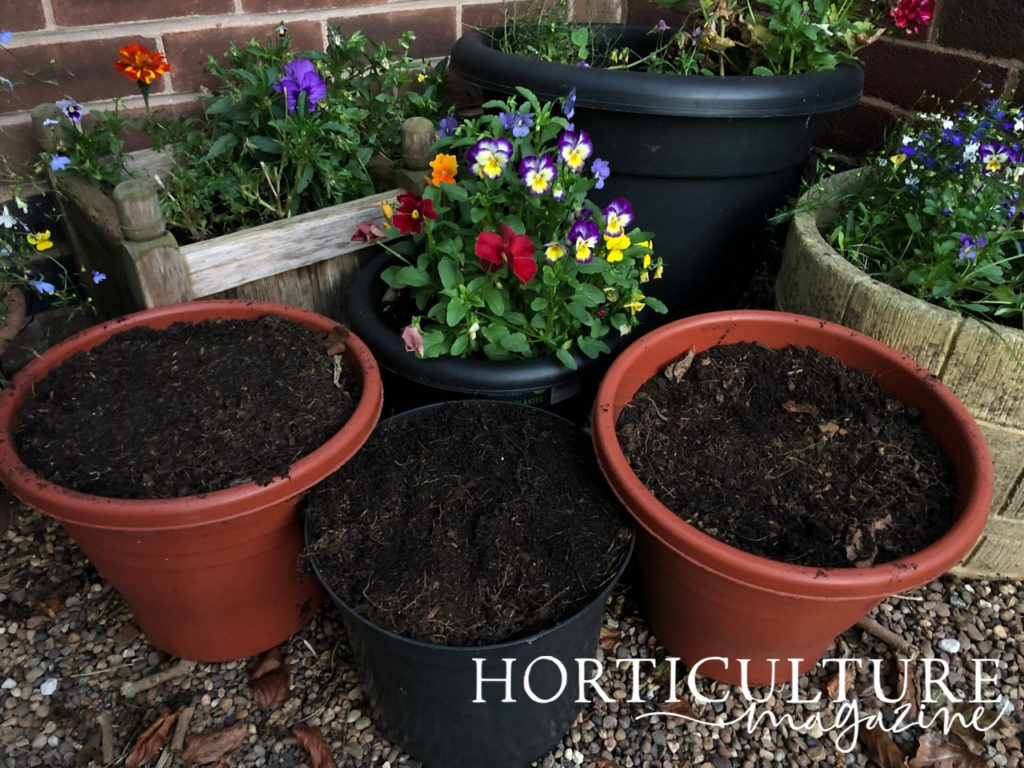
You may need to protect your bulbs from squirrels and other pests by covering them with a metal mesh.
In spring and through the flowering period especially, make sure you do water in dry weather, but again, take care not to overwater and make sure excess can drain away freely.
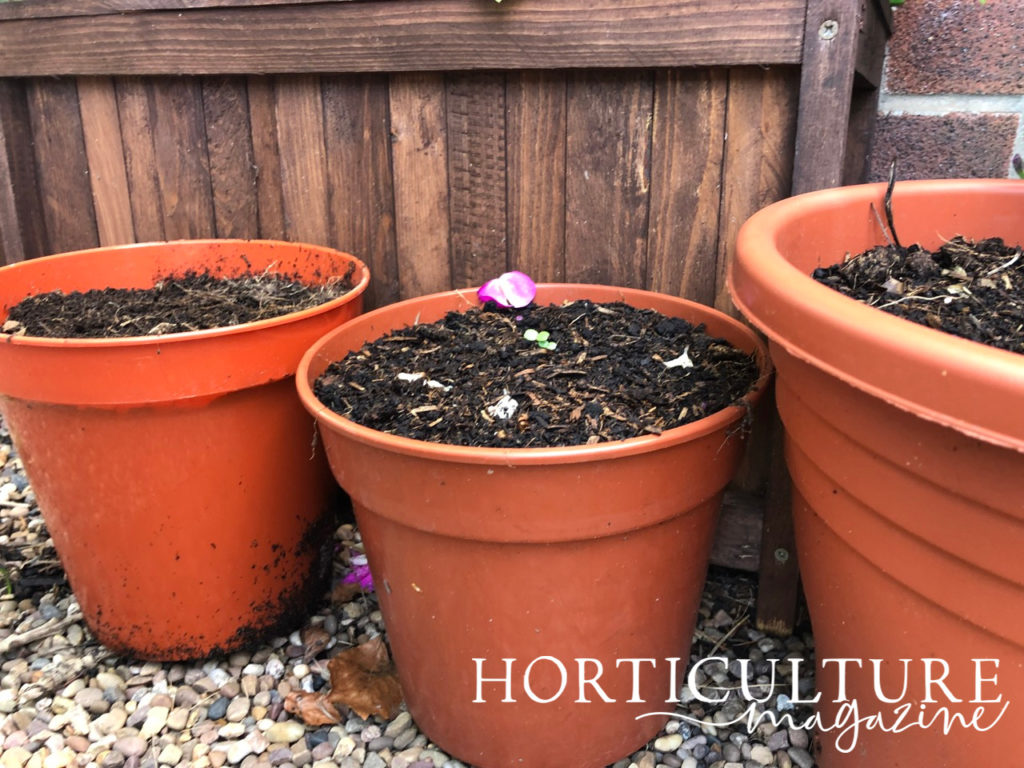
If you would like to enjoy tulips over multiple years, it can be a good idea to feed plants in pots every week with a potassium-rich organic liquid plant feed.
Tulip varieties that don’t always re-flower all that reliably can be lifted once leaves die back, and can be stored in a dark, well-ventilated place at 18-20°C until the largest bulbs are replanted in autumn.
This can make successful re-flowering more likely, though this is not guaranteed.
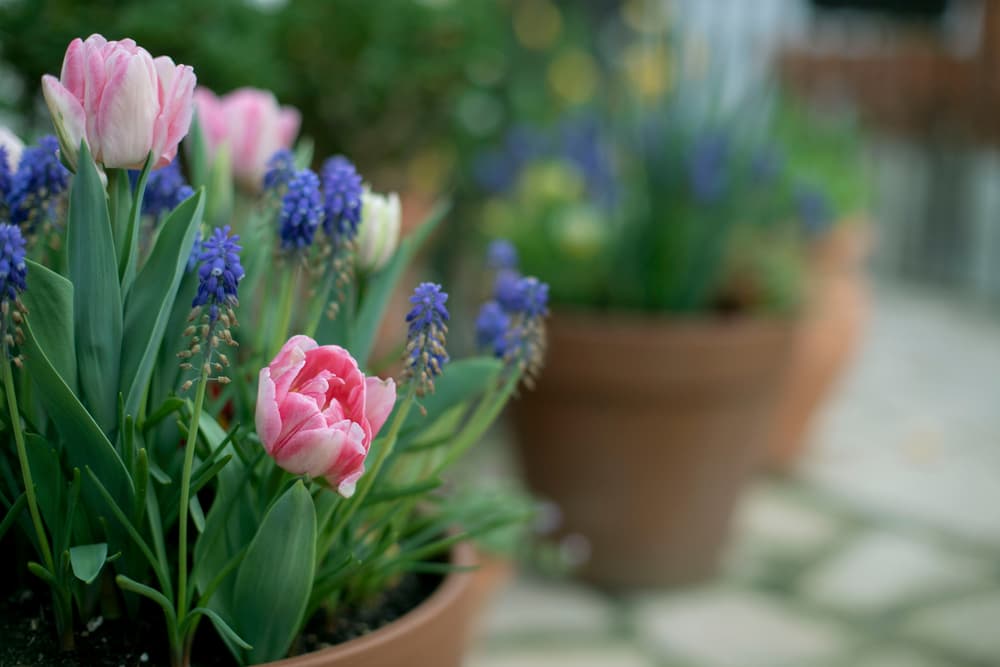
Expect your display of tulips, if you are not just treating them as single-season bedding plants, to flower well the first year only, with reduced flowering in the second year.
“If reliably perennial tulips are used, good flowering can be expected to continue for several years, whilst other bulbs such as Narcissus can be expected to be reliably perennial,” explains Roy.
In any case, after two years you will likely need to thin out the tulip bulbs to prevent overcrowding and repot the bulbs in a new container display.
